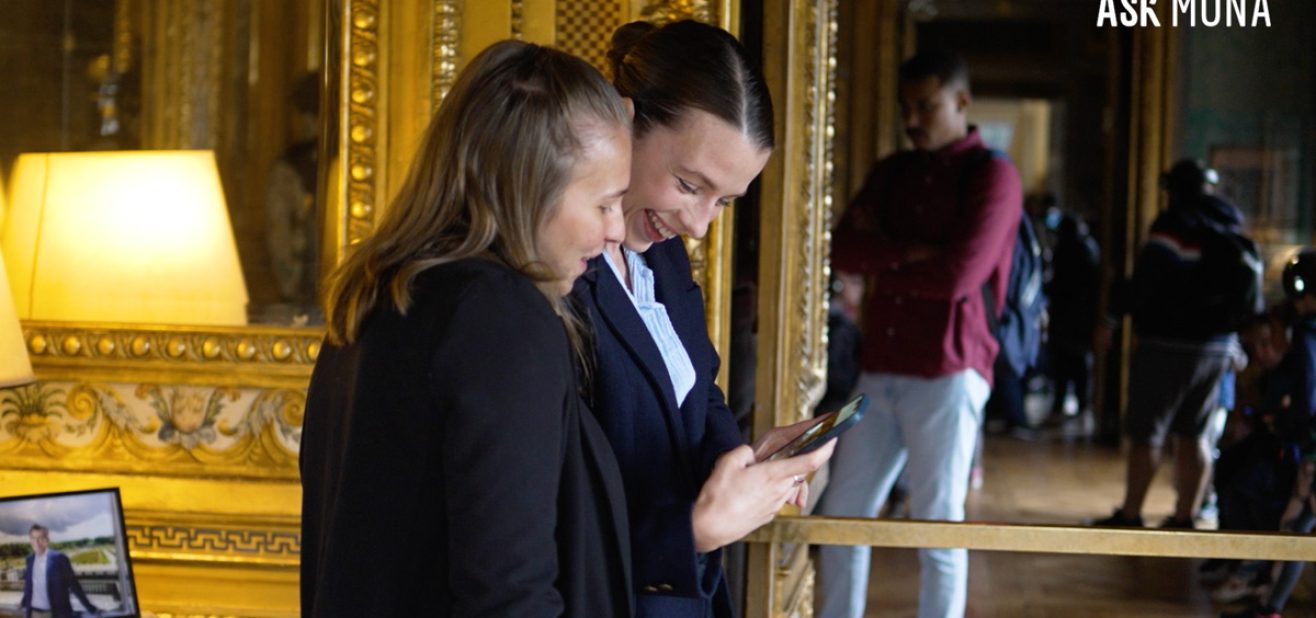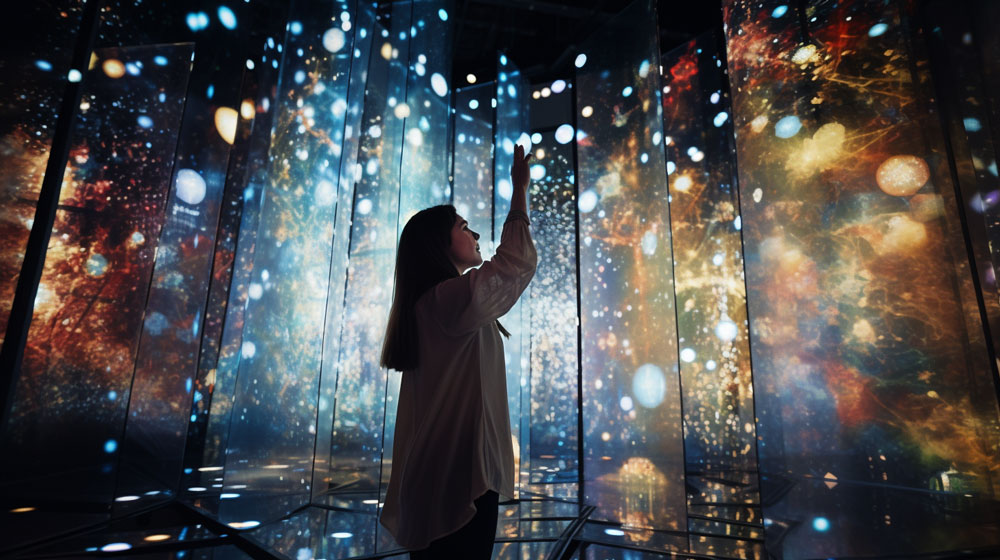#CULTURE
6 MINUTES
Chatbot:
cultural institutions’ essential assistant
Nowadays, we come across chatbots in many sectors. You have already discovered some of them on bank and e-commerce websites or through vocal assistants. This technology has proven its efficiency for several years now.
- According to Acquire, more than 1,4 billion people across the world use chatbots.
- According to Marketing Dive, more than 40% of millennials are using this new channel every day.
- According to IDC, many companies opt for chatbots to be more productive.

What is a chatbot ?
A chatbot is a conversational assistant, which anyone can interact with instantly through messaging platforms and websites. Interacting with a chatbot is possible through voice (like Siri or Alexa) and text messages.
As opposed to applications, these devices do not require any download. As a result, they do not occupy any storage space in the user’s mobile device.
Finally, they mostly exploit cutting-edge technology, such as artificial intelligence. In other words, chatbots train and improve constantly as long as they talk to users.
These robots, with which anyone can chat online, allow companies and institutions to offer their users an interactive and personalized approach.
This service is not only valid for the banking or commercial sector. Cultural institutions are increasingly taking advantage of these devices as a method of information and cultural mediation.
How do cultural institutions use chatbots?
Museum Booster conducted a study with +200 museums around the world. The results show that the popularity of chatbots among cultural institutions has increase fivefold since the pandemic.
How to explain this considerable rise in popularity? Here are the reasons why the chatbot is the ideal tool to better interact with your visitors.
Be constantly available
Firstly, they are available 24 hours a day, 7 days a week, to help users being well prepared for their visit. Thanks to advanced technology, it is possible to train a chatbot to answer better a certain number of questions. It is an incredibly convenient tool to assist teams in answering specially recurrent questions.
Discover your visitors’ concerns
Secondly, the chatbot allow cultural institutions to collect some very interesting data regarding the major visitors requirements. Therefore, it is possible to know which questions are asked by visitors or which events interest them the most.
Inspire your publics
Thirdly, chatbots are designed to assist visitors throughout their experience, to the point of becoming a digital guide. Thanks to specific content in various formats, they become a suitable complement to the other mediation devices and the signage of an exhibition.
Win the loyalty of your visitors
Finally, they already proved their usefulness after the visit. For example, chatbots allow to easily collect the visitor’s feedback and showcase subscription offers, such as the newsletter.
Overall, a chatbot can also enhance the whole digital ecosystem of the cultural place. Indeed, chatbots can connect its users with the different services offered by museums. The chatbot has the potential of an omnichannel convergence of messages and information. This tool can be a guide, a ticketing service, a medium, all of them handset in the same place.
Here is the icing on the cake : this tool creates a specific link with the users. This puts him on the path to faithfulness and loyalty to your institution.

Chatbot : an intuitive device to inform users before the visit
Chatbots that provide practical information for cultural institutions have become a must-have. The conversational agent embodies the spirit of the place. It is also the first visitor’s interlocutor on the website. Here are some examples of conversational agents around the world.
The Anne Frank Museum in Amsterdam was the first museum to launch a chatbot! This chatbot first informs the visitor about practical information about the museum. It also assist the user who wants to learn more about the history of Anne Frank and the Second World War. The museum sees this conversational agent as a way to extend the museum’s presence to the world, providing information other than by exploring a website.
The museum of Trento and Rovereto, in Italy, has created a chatbot that provides access to practical information and offers a mediation service that includes referencing the works by number.
After developing the first french chatbot for a museum with the Cité de la Céramique de Sèvres, Ask Mona collaborated with the Philharmonie de Paris to establish their personalized conversational agent.
It is available directly on the institution’s website to inform visitors and answer all their questions.
By communicating with the chatbot, users receive personalized information according to their situation and access the content that interests them in a few seconds.
Chatbot: the ideal digital guide
Throughout the world, more and more cultural institutions are choosing to go further with this intelligent tool by integrating a chatbot to enhance the visiting experience. Here are some examples.
The Pinacoteca de Sao Paulo partnered with IBM to design “The Voice of Art”: a chatbot powered by IBM Watson to answer visitors’ questions. The visitors are given a smartphone with the app and a headset at the entrance of the Pinacoteca. As they walk through the museum, they receive notifications when they are near a work that offers this form of interactive and personalized mediation. They are then invited to ask questions about the paintings and sculptures near them via the headset microphone.
The Museum of Fine Arts in Minsk in Belarus has integrated a chatbot that allows visitors to flash works of art. To do so, they use a QR Code to access additional content. Here, the chatbot supports the mediation of the place with an innovative device.
The Centre Pompidou has decided to equip itself with a chatbot developed by Ask Mona. Like a real guide, Tubo assists visitors throughout the permanent collection of the museum to discover the works and artists.
Technologies, such as visual recognition, allow visitors to take pictures of the works in order to access targeted content and interact with the institution.
The device offers various content formats: text, audio, and video, which make it possible to be more accessible and to highlight the institution’s productions.
Chatbot : some conclusive feedbacks
Invisible Studio conducted a study in Italy. The results show that 90% of users between 16 and 18 go through the guiding experience within a chatbot. In addition, 66% of those surveyed found it was a helpful learning tool, especially to discover art better.
We found similar data during a study by Ask Mona’s teams around the chatbot we deployed during the Agoramania exhibition at the Maif Social Club.
Looking at the overall usage data, we found that 18% of the exhibition visitors used the chatbot, and 80% used it on all the available works.
We conducted a further study with a small group of visitors who almost unanimously said the device was easy to use. Furthermore, 90% said they would use it again elsewhere.
In summary, chatbots can bring significant added value to museums. It is an interactive tool that allows the visitor to become an actor of his own visit, through a playful and personalized learning. The chatbot is a digital guide with great potential, allowing to consider the visitor in his individuality.
Not only do the figures confirm the popularity of the chatbot, but on top of that, the tool is often updated with new functionalities. For example, after being used as an information agent or a virtual guide, the technology format allows ticket reservations, especially for school groups. Ask Mona now offers this new product by connecting the ticketing service with the chatbot.
You would like to set up a chatbot for your institution?








